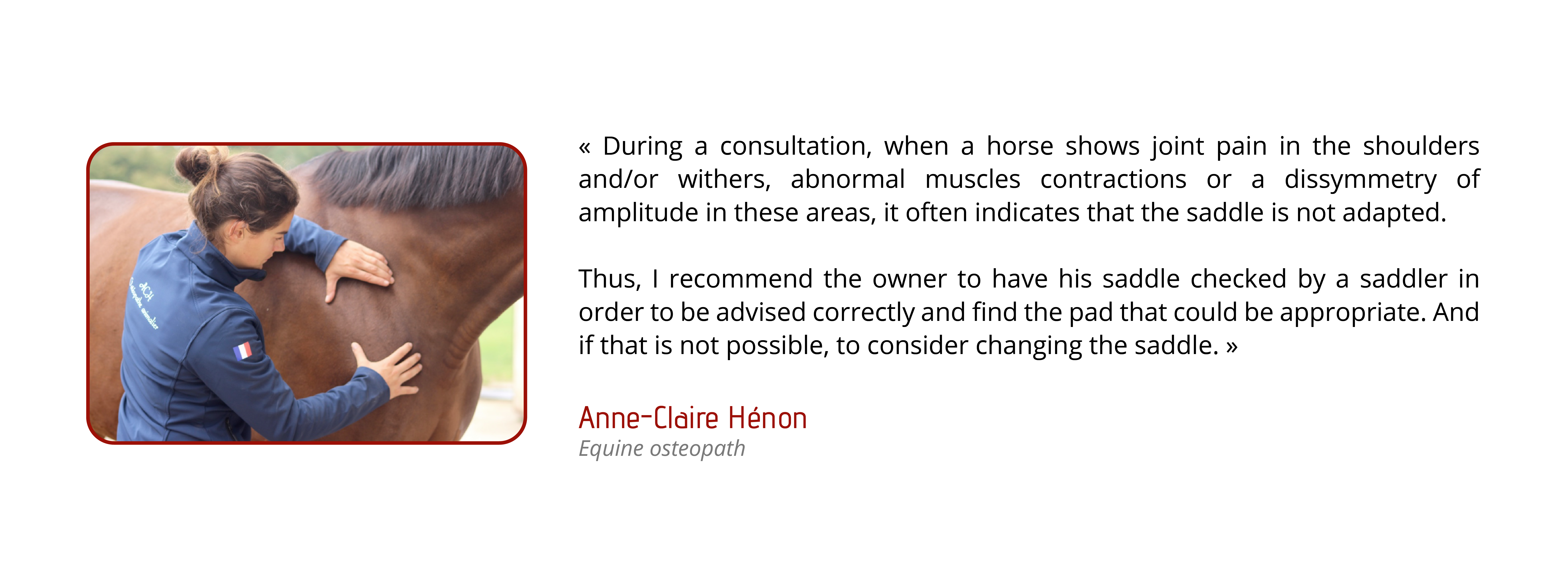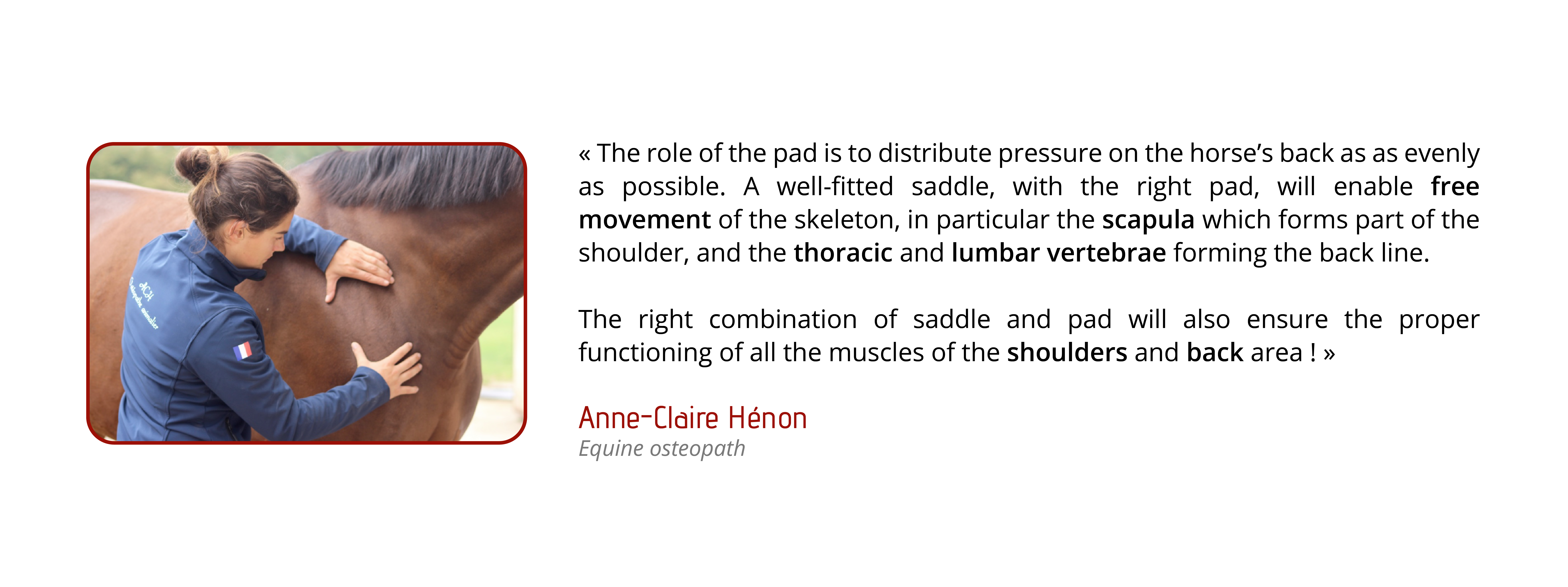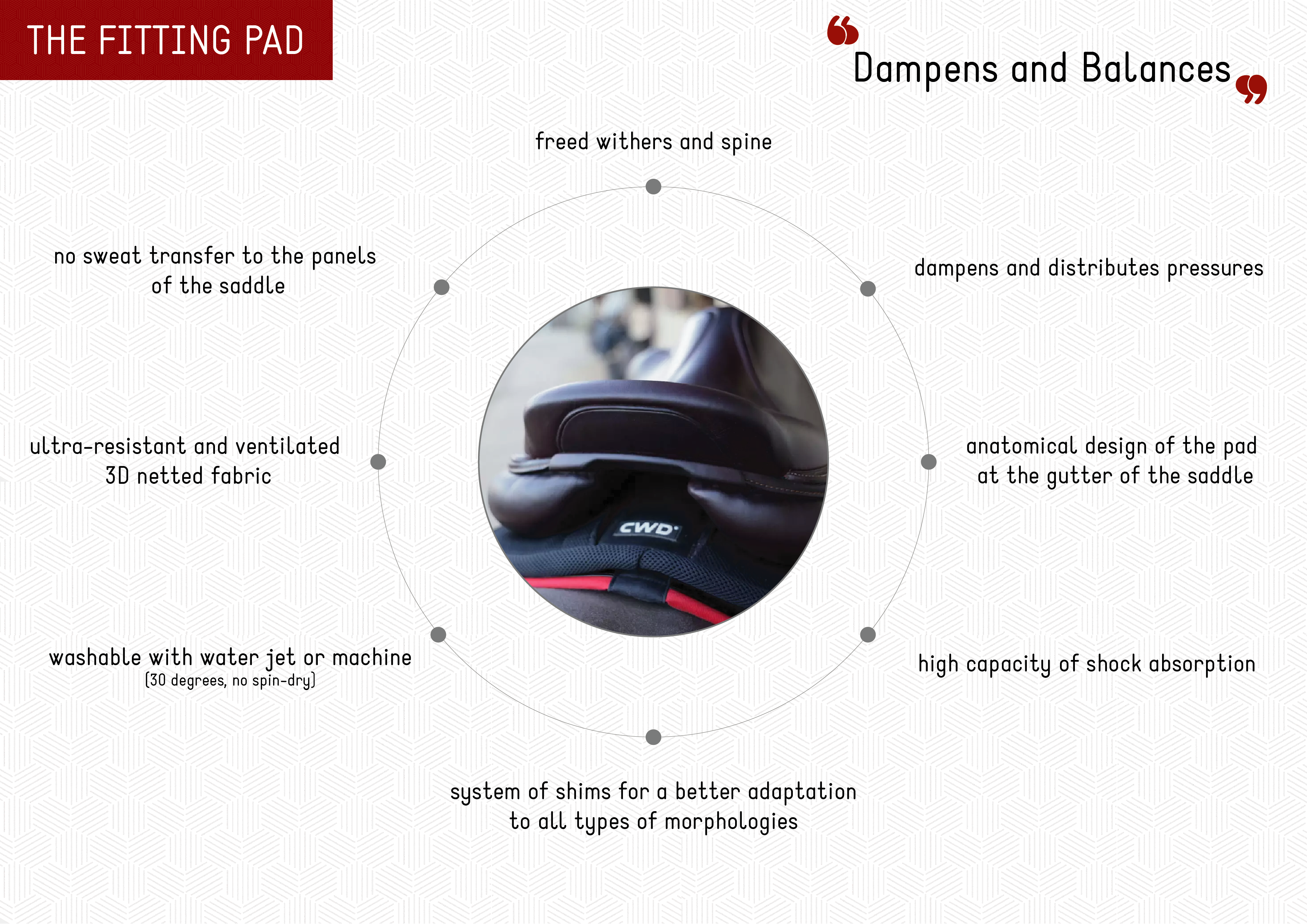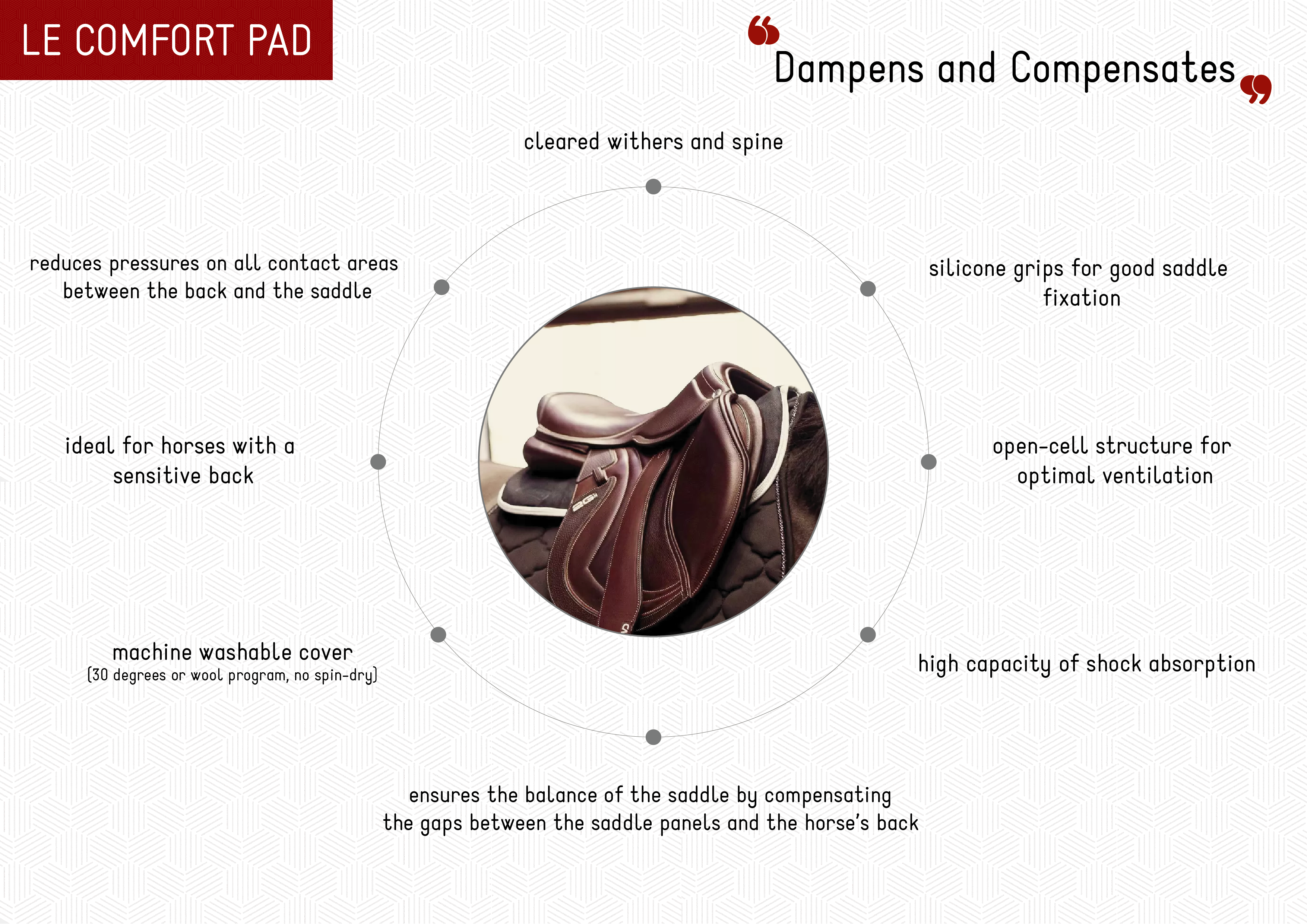Only US$ 500 left to enjoy free shipping!
No products
Only US$ 500 left to enjoy free shipping!
No products
Appearing several decades ago, the pad has become an essential accessory in saddlery, and even a must-have for some riders. However, using the wrong pad can have major consequences for the health and well-being of your horse. In this article, we give you our advice on choosing the right pad.
There are several « families » of pads. We can find the classic pads which limit shocks, and the corrective pads which rebalance the lot when there is a problem with the saddle or with the horse’s morphology.
The saddle must be adapted to the rider’s morphology. Did you know it must also be adapted to the horse’s one?

The pad has many qualities. It is very useful, for example, to:

The use of a pad will depend on the adaptation of your saddle to your horse’s morphology.

According to Cyrille, CWD saddler expert: « Your pad must be large and wide enough compared to your saddle. It must not lodge in the gutter of the saddle. »
Indeed, the gutter separates the two padding of the saddle. It allows to avoid pressure on the spinous processes of the spine. If your saddle is well-fitted, there is no reason to use a pad.



When buying a pad, you must also pay attention to the fabrics used. Indeed, some will distort with time and the pressure distribution will not be uniform anymore.
For example, wool and gel will tamp over time, while foam or mesh keep their mechanical properties for a longer time.
Then, the question arises: what if you have a unique saddle for several horses? This is where the ‘compensator’ pads come in!
That is why, this year, we have decided to release a new range of riding equipment: the pads. The materials used in the FITTING and COMFORT allows the pads to remain uniform over time.
According to Cyrille, CWD saddler expert: « The appropriate term is ‘compensator’ because it must allow the saddle to be straight to avoid any pressure on the horse’s back. »
It is composed of a 3D netted mesh fabric developed by our R&D department. A thin layer of denser material inside the pad allows to diffuse localized pressures. The design of the pad at the gutter of the saddle allows it to free the horse’s withers and spine.
It can be adapted to all horse’s morphologies thanks to a system of shims. These shims are included when purchasing the pad and allow the saddle to be rebalanced when the horse’s morphology changes, when buying a pre-owned saddle or when using one saddle for several horses.

It ensures the balance of the saddle by compensating the gaps between the panels of the saddle and the horse’s back. Composed of an inner core of foams coated with a viscoelastic injected shell, it allows to diffuse the pressure exerted by the weight of the saddle and of the rider.
Designed with a clearance at the withers and spine areas, it ensures the horse’s freedom of movement and provides optimum horse/rider comfort.
